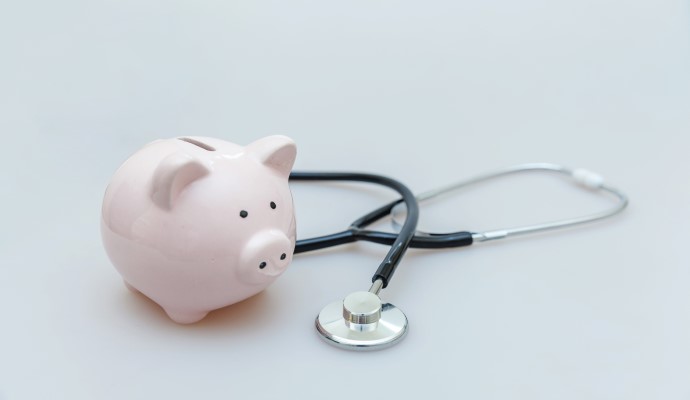Fewer Primary Care Practices Struggling A Year After COVID-19
A new survey showed that just 7% of primary care practices cannot pay their bills, but the situation is still not ideal for these providers a year after COVID-19.

Source: Getty Images
- Far fewer primary care practices are struggling financially a year after the start of the COVID-19 pandemic, according to a recent survey from the Larry A. Green Center, Primary Care Collaborative (PCC), and 3rd Conversation.
The survey fielded responses from over 650 clinicians working in primary care practices across the country, with most specializing in family medicine and internal medicine and over a fifth practicing in rural settings.
Just 7 percent of the clinicians reported that their practice is unable to pay bills on time, a marked difference from a year ago when the survey series revealed that about a fifth of practices were expecting to close within a month because of financial hardship.
Fewer than 5 percent of clinicians also said loans taken out during the COVID-19 pandemic are coming due and they don’t know how to pay them.
Primary care practices are also increasingly joining the nation’s COVID-19 vaccine rollout, with 38 percent of clinicians reporting that their practice is administering vaccines. This is a significant increase from previous weeks when primary care was hardly being leveraged in the rollout effort, researchers stated.
READ MORE: Primary Care Needs Telehealth Reimbursement, Targeted Relief
Patient volumes are also rebounding after widespread community shutdowns throughout 2020 to stymy the spread of the virus. Now, over a year later, primary care practices are conducting chronic-care follow-up (91 percent), screening patients for depression or anxiety (92 percent), and performing routine cancer screenings (79 percent).
Additionally, many practices are establishing new partnerships with entities such as community organizations (28 percent), behavioral health services (27 percent) and local pharmacies (19 percent) to bolster services.
But the picture isn’t all rosy for primary care practices. Just under 40 percent of clinicians feel the level of strain stemming from COVID-19 is the same as a year ago, with a little under half of these respondents saying the strain feels worse this time around.
Meanwhile, only about 37 percent of clinicians said the strain is lifting compared to last May.
Additionally, about 30 percent of clinicians said their practice received “adequate financial support from the government” during the pandemic.
READ MORE: How COVID-19 Imperiled Physician Practices, And How to Save Them
“Primary care never hit the pause button,” Rebecca Etz, PhD, co-director of The Larry A. Green Center, said about the most recent survey results. “Without funding and without inclusion in pandemic-relief planning, primary care has extended hours and services, deferred salaries and waived co-pays in order to meet the health needs of the population, and yet we have failed to have its back.”
“How much data must we collect on its vulnerabilities, and how long before policymakers provide them with the support they’ve earned and deserve,” Etz asked.
Public and private payers continue to provide administrative relief as they did at the start of the COVID-19 pandemic, added Ann Greiner, president and CEO of PCC.
Common flexibilities enacted during the pandemic included increasing telehealth coverage and reimbursement and waiving all deductibles, copayments, and other costs for insured patients who fell ill with COVID-19. But payers have started to let up some of these flexibilities over a year later.
Greiner also pushed for payers to “dramatically increase fiscal relief for primary care.”
READ MORE: Can Direct Primary Care Lead Private Practice Out of the Hole?
“Strengthening primary care will pay dividends: getting the country more quickly to herd immunity and a return to some sense of normalcy,” Greiner stated.
Primary care practices took a $15 billion hit during the early days of the pandemic, according to researchers from Harvard Medical School and the American Board of Family Medicine. Practices were slated to lose over $65,000 in revenue per full-time physician after drastic declines in both office visits and payments from March through May 2020, they projected.
Researchers—as well as The Larry A. Green Center and PCC—have pointed to data to show the need for more stable revenue sources for primary care practices.
“Our results imply that federal subsidies (under the CARES Act and subsequent legislation) are unlikely to be sufficient to ensure the financial viability of primary care practices,” they stated.
The researchers said their findings “ultimately highlight vulnerability of primary care practices to financial demise due to fee-for-service and visit-based payment policies, indicating that capitation-based payment reforms may be key to ensuring robustness of primary care into the future.”
The data also shows that practices that fared relatively better during the pandemic had more than 50 percent of their income for primary care based on prospective capitation, Etz told RevCycleIntelligence last year.
Practices with this type of reimbursement structure are under less financial strain than their fee-for-service peers partly because they have a “dependable revenue stream that allows them to do what primary care does best, which is to meet patients when and where they need through whatever modality,” Etz stated.
Adoption of these type of payment models is still very low, with just 5.1 percent of healthcare payments made in 2019 coming from this “population-based” payment method, the Health Care Payment Learning & Action Network reports.
